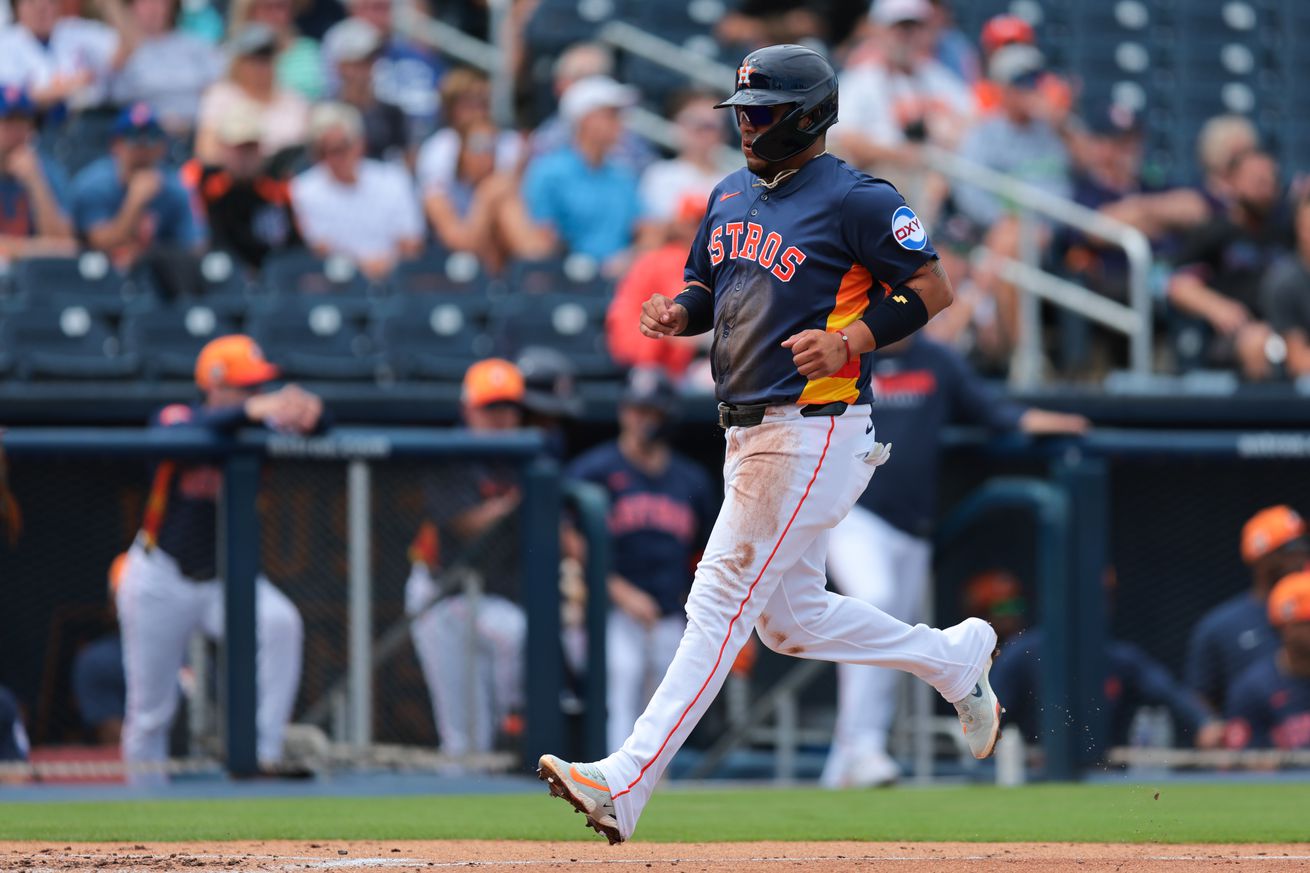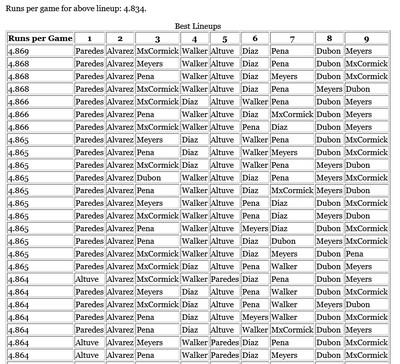
Using the lineup analysis tool to examine the Astros’ best lineups
Fans like to talk about batting order, and seemingly everyone has an opinion about the best order to line up hitters. But these discussions probably exaggerate the importance of batting order. Over the course of a season, the differences in Win Percent between batting order variations are expected to be fairly minor and probably unnoticeable. It’s true that the very worst possible batting orders may not have a de minimus effect on runs scored, but these batting orders usually are so bad that no manager is likely to use it.
It’s early to analyze the Astros 2025 batting order, mostly because we don’t know who will make the team and play various positions. But I will take an early stab at lineup analysis for entertainment.
As I have done in past seasons, I will use the Baseball Musings lineup analysis tool, which uses statistical analysis to estimate the runs scored per game from various batting orders. The player variables are OBP and SLG, and I utilize the Fangraphs depth chart projection to estimate Astros players’ offense.
At this early stage, I assume Altuve plays LF, Dubon plays 2b, Alvarez is the DH, and Meyers and McCormick are the CF and RF. Obviously many, many combinations of batting orders are possible. The lineup analysis tool estimates 4.83 R/G for the average lineup. The difference between the “best” lineup and the 30th best lineup is only six-thousandths of a R/G. Hence, the differences in run scoring between variations in normal lineups is extremely minor.
The optimal line up, according to the lineup tool:
(1) Paredes (2) Alvarez (3) McCormick (4) Walker (5) Altuve (6) Diaz (7) Pena (8) Dubon (9) Meyers
The very next optimal lineup simply switches McCormick and Meyers between the 3d and 9th spot.
Below are the top 30 lineups generated by the model:

Baseball Musings Lineup Tool
For my evaluation of the lineups, I occasionally refer to “The Book: Playing the Percentages in Baseball” by Tango, Lichtman, and Dolphin (“The Book”), which develops a sabermetrics view of constructing batting orders. The Book concludes that the three best offensive players should be placed in the 1, 2, and 4 lineup positions. The two best hitters should occupy the No. 2 and No. 4 position, with the higher OBP hitter at No. 2. The No. 2 and 4 slots are equally important batting order spots.
Some thoughts on the most optimal lineups:
- Paredes is the lead off hitter in most of the top run scoring lineups. This isn’t surprising, since he is projected to produce the second highest OBP (behind only Alvarez) among Astros’ players. The rate of getting on base is the most important component of the lead off slot. One impediment to that idea is Altuve’s familiarity with the lead off slot. Manager Joe Espada may continue using Altuve at the top of the order. Only a couple of the top 30 batting orders put Altuve at lead off, thereby moving Paredes down to 5th.
- Alvarez is the No. 2 batter in all 30 of the best run scoring lineups. Alvarez is the best hitter on the team, with both the best SLG and OBP. Espada frequently used Alvarez in the No. 2 slot last season, which led to some controversy among fans. Espada also at times used Alvarez at No.3, but this simulation is unanimous at putting Alvarez at No. 2 in 2025.
- Walker is in the important No. 4 clean up position in most of the top run scoring lineups. A few of the best run scoring lineups put Diaz at No. 4.
- McCormick is the No. 3 hitter in many of the best batting orders, followed by Meyers, Pena, and Dubon as occasional No. 3 hitters. The Book views the No. 3 slot as over-valued and reserves the slot for above average hitters with significant batting flaws. Because he comes to bat so often with two outs and no runners on base, the #3 hitter isn’t nearly as important as we might conventionally view the lineup spot.
- The 4, 5, and 6 spots frequently come up with runners on base, and the model generally chooses Walker, Diaz, and Altuve in those slots.
- Dubon and Meyers mostly are at the bottom of the batting order.
If you go the Lineup Tool link above, you can also see the 20 or so worst batting orders. Generally the worst batting orders utilize some combination of Dubon and Meyers in the 1 and 2 slots. with an occasional appearance by Pena in the 2 slot. Because they are projected to produce poor OBP, this is not the best use of those players. In addition, the worst lineups move Alvarez to the bottom of the batting order, which is sub-optimal for obvious reasons. These lineups should be very infrequent.
Again, a reminder that variations from the “best” lineups generally won’t make a significant difference in results over the span of a season. So, I wouldn’t get too upset if the manager deviates a bit from the optimal batting order.